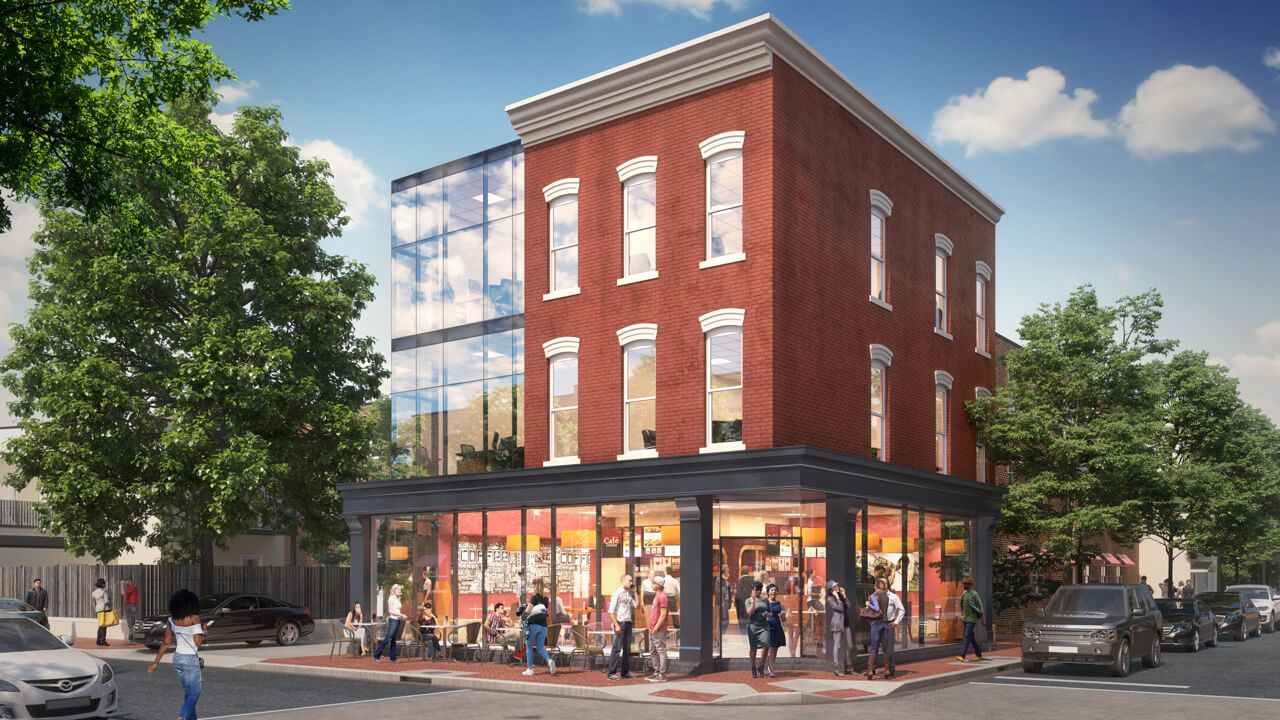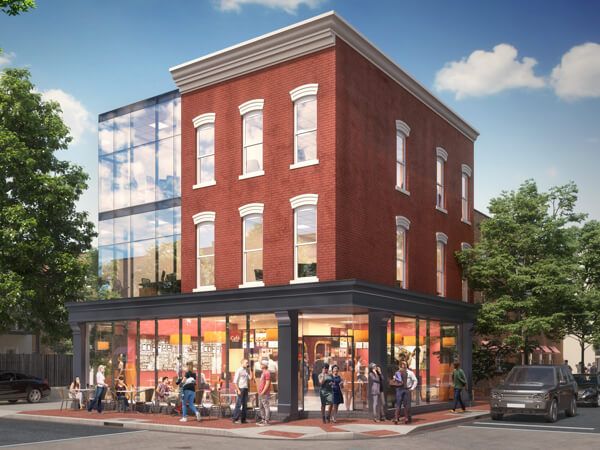The Fundrise Opportunity Fund has acquired a mixed-use property in the LeDroit Park neighborhood of Washington, D.C., which we intend to redevelop into apartments with ground-floor retail. The asset — which is located within a designated Opportunity Zone census tract — was acquired for approximately $1.3 million, and we intend to invest roughly $900,000 into property improvements as part of the asset’s redevelopment.¹
Business plan
Our intent is to breathe new life into the property, which had fallen into a state of disrepair and whose commercial component had been vacant for decades. As the surrounding neighborhood continues to develop, the building is poised to benefit from the structural undersupply of rental units in the D.C. metropolitan area, which is redirecting demand from more established neighborhoods toward up-and-coming communities that may offer a relative rent discount, and increasingly attractive retail amenities.
Pursuant to the stipulations of the Opportunity Zone legislation as outlined in the Internal Revenue Code section 1400Z-2 and clarified by the IRS, we intend to substantially improve the property by deploying capital in excess of our cost basis in the building. This will include an interior renovation of the upper floors into apartment units, and a retail build-out — likely for a restaurant or cafe on the ground level. We expect to complete these improvements within the 30-month time frame that is required in the Opportunity Zone legislation.
Why we invested
Rising residential demand. The District’s structurally undersupplied housing market supports consistent high occupancy rates. Despite the delivery of close to 750 new apartment units in D.C. proper in 19Q1, the city registered a vacancy rate below 5%, and saw rental rate increases of roughly 2.5%. Metrowide, while 36% of residents in the region rent, only 33% of its housing inventory comprises apartments. This supply shortfall should continue to support low vacancy rates and rent growth at apartment properties, and their rising values.
Moreover, the D.C. metro area is expected to see a significant increase in demand following the construction of Amazon’s new HQ office in Arlington, Virginia, which is projected to add 25,000 jobs to the region over the next decade. Given the convenient integration of Crystal City with the District’s public transit network via the metro’s Blue/Orange/Silver lines and anticipated continued investment in that system, it is likely that an appreciable proportion of Amazon employees will mimic their Bay Area counterparts, residing in the city’s dynamic downtown neighborhoods and conducting a so-called “reverse commute” to their employer.
However, even prior to Amazon’s announcement, demographic changes presaging the continued strong performance of multifamily rental properties and retail outposts were underway in LeDroit Park. Census data show that from 2010-2017, the area’s median income nearly tripled. Moreover, during the 10-year trailing period ended Jan. 2019, the median home price in the neighborhood rose by more than 125%, which speaks to rising residential demand in particular. This is in line with the overall eastward migration of the city’s young, educated population. Priced out of more established neighborhoods, many Millennials have been looking to instead plant roots in places like Cardozo/Shaw, LeDroit Park, and Bloomingdale/Eckington. However, with the median rent in Shaw now nearing $4,000/month, the city’s center of gravity continues to shift eastward.
Central location with attractive architecture and retail amenities. Blocks from Howard University — which boasts a total enrollment of over 10,000 students — the Shaw/Howard U metro station, and storied D.C. entertainment venues like the Howard Theatre and 9:30 Club, LeDroit Park sits at the crux of numerous storied D.C. institutions, and offers convenient access to other parts of the city, including the bustling U Street and 14th Street commercial corridors.
Meanwhile, as a designated historic district, LeDroit Park is known for its Victorian architecture and beautiful rowhomes — though many had fallen into disrepair over the preceding half-century. The neighborhood was severely blighted following the MLK riots of 1968; however, the community is now seeing a resurgence, including a restoration of many of the beautiful homes for which it was once known. It is expected that LeDroit Park’s historical architecture and convenient location will continue to lure both residents and retail purveyors, uplifting the community, and cementing its status as both a desirable residential neighborhood, and a premier entertainment destination.
We believe this asset is a high-value addition to the Opportunity Fund portfolio, and look forward to providing updates on its progress as we continue to execute on our capital improvement strategy.




